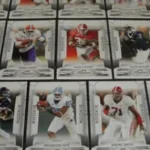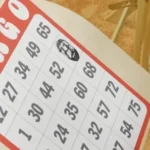A studio chart for cello is a structured tool used by cellists and instructors to monitor progress, guide practice sessions, and prepare for performances. Whether for a beginner or a seasoned musician, this chart plays a crucial role in organizing practice routines and ensuring consistent improvement. Here’s an overview of what a typical studio chart for cello might look like and how it’s used.
Key Components of a Cello Studio Chart
- Student Information:
The chart usually starts with basic details such as the student’s name, age, and level of experience. This helps in personalizing the learning process and tracking development over time. - Goals and Objectives:
The chart includes both short-term and long-term goals. Short-term goals might involve mastering specific techniques like vibrato or shifting, while long-term objectives could be preparing for a recital. - Repertoire Tracking:
A studio chart often lists the pieces the student is working on. This section helps both student and teacher keep track of musical pieces, their performance progress, and future repertoire. - Technical Exercises:
This section focuses on essential cello techniques, such as scales, arpeggios, and bowing methods like staccato or legato. Including these in the chart ensures well-rounded technical development. - Practice Logs:
A practice log is key for maintaining consistency. It allows the student to document daily practice activities, note specific challenges, and track progress
Also Read N: How To Sell A Bichon Frise In Albany, NY: A Complete Guide
Benefits of Using a Studio Chart
- Enhanced Focus: Studio charts offer clear goals and progress tracking, helping students stay focused on areas that need improvement.
- Motivation: By visualizing progress, students can feel more motivated to practice regularly.
- Personalized Learning: Teachers can tailor lessons based on the chart, making learning more effective.
Also Read P: Chi Gung: Stand Like A Tree – Rules For Mastering Zhan Zhuang
FAQ
- What is a studio chart for cello?
It is a tool used to track a cellist’s progress, set goals, and organize practice sessions during lessons or studio work. - How does it differ from regular sheet music?
Unlike full sheet music, a studio chart focuses on practice goals, techniques, and sometimes simplified chord progressions, making it easier to adapt to different needs. - What are finger placements in a cello studio chart?
These are numbers on the chart that indicate where the player’s fingers should be positioned on the cello’s fingerboard to play the correct notes. - How often should the chart be updated?
It should be updated regularly, ideally after each lesson or practice session, to accurately reflect progress and adjust future goals. - Can a studio chart be digital?
Yes, digital tools and apps can be used to create and track studio charts, allowing for more flexibility and easier updates.
Using a studio chart for cello ensures that both students and teachers are aligned in the learning journey, helping players reach their full potential through structured practice and clear objectives.










